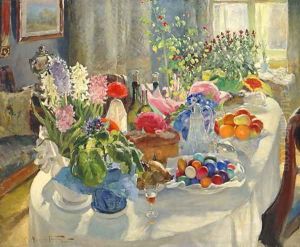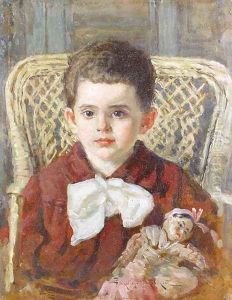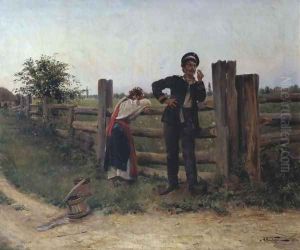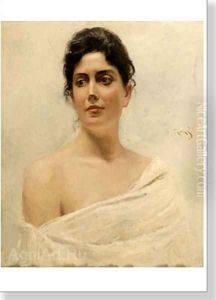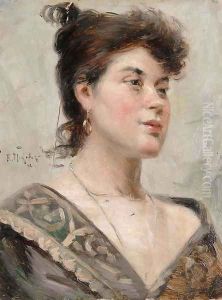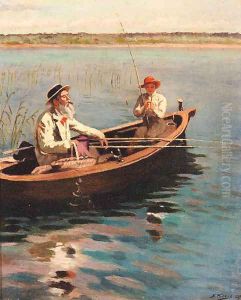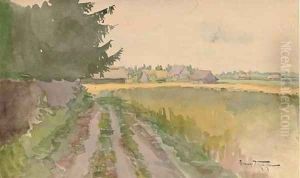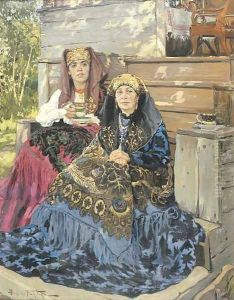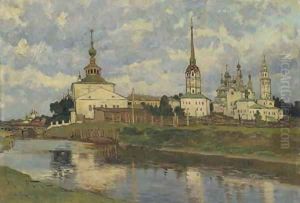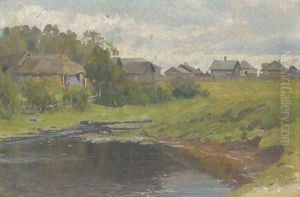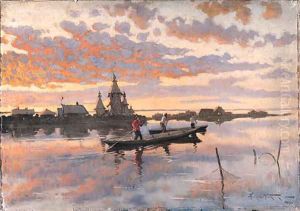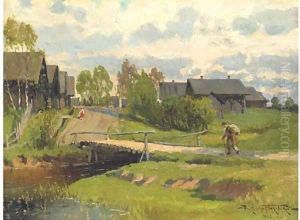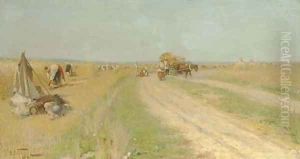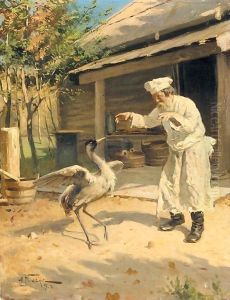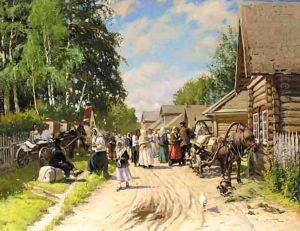Aleksandr Vladimirovich Makovsky Paintings
Aleksandr Vladimirovich Makovsky was a Russian painter and a member of the renowned Makovsky family of artists. Born into the fabric of Russian artistic nobility on August 6, 1869, in Moscow, Russia, he was one of the sons of Vladimir Makovsky, a celebrated Russian painter of the Realist school, and the brother of Konstantin Makovsky, another prominent artist of the time. This familial background provided Aleksandr with an enriching environment that was steeped in artistic tradition and innovation from a very young age. Aleksandr's artistic journey began under the tutelage of his father and at the Moscow School of Painting, Sculpture and Architecture, where he was influenced by the Realist movement, which sought to depict the lives of the common people with sincerity and depth. His early works were marked by a keen observation of everyday life, imbued with a sense of empathy and social awareness. Makovsky's style, however, evolved over time, incorporating elements of Impressionism and Symbolism, reflecting the broader shifts in the world of Russian art during the late 19th and early 20th centuries. Throughout his career, Aleksandr Vladimirovich Makovsky participated in numerous exhibitions, both in Russia and abroad, gaining recognition for his artistic prowess. His work was part of a larger narrative that sought to capture the spirit and complexities of Russian society during a period of significant change and upheaval. Despite the shadows cast by the Russian Revolution and the subsequent civil war, Makovsky continued to produce works that were reflective of his times. Makovsky's personal life was as complex and tumultuous as the era he lived in. He experienced the highs of artistic success and the lows of personal tragedies, including the loss of family members and the challenges posed by the political turmoil of his time. Aleksandr Vladimirovich Makovsky passed away on March 23, 1924, in Petrograd (now Saint Petersburg), leaving behind a legacy that, while perhaps not as widely recognized as that of his father or brother, contributed significantly to the tapestry of Russian art. His works remain a testament to the rich cultural heritage and the turbulent history of Russia in the late 19th and early 20th centuries.
